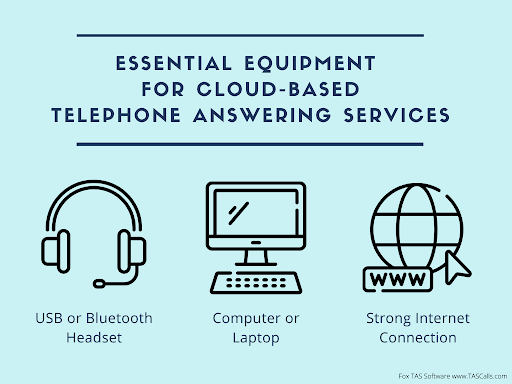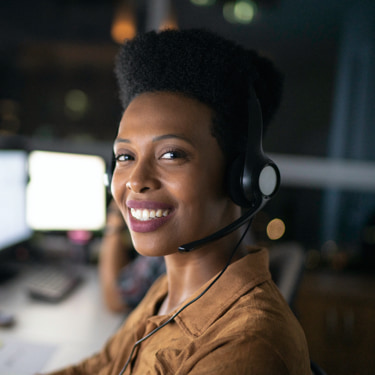All Categories
Featured
Table of Contents
- – Best Virtual Receptionist (Live Phone Answering...
- – What Is The Best Phone Answering Services - Au...
- – What Is The Best A Guide To Using Automated An...
- – Best Virtual Receptionist & Phone Answering S...
- – What Is The Best Business Answering Services ...
- – Who Is The Best Phone Answering Services - U...
Best Virtual Receptionist (Live Phone Answering Service) Dealer Near Me
This device and its followers were developed by Sava Jacobson, an electrical engineer with a private consulting organization. While early voice mail utilized magnetic tape innovation, many modern devices utilizes strong state memory storage; some devices utilize a combination of both, with a solid-state circuit for the outbound message and a cassette for the incoming messages.
"toll conserving" listed below) (virtual answering service). This works if the owner is evaluating calls and does not want to speak with all callers. In any case after going, the calling party ought to be notified about the call having been responded to (most of the times this begins the charging), either by some remark of the operator, or by some welcoming message of the little bit, or dealt with to non-human callers (e.
This holds particularly for the TADs with digitally kept welcoming messages or for earlier makers (before the increase of microcassettes) with an unique unlimited loop tape, different from a second cassette, committed to recording. There have been answer-only devices without any recording abilities, where the welcoming message needed to notify callers of a state of present unattainability, or e (telephone answering service).
What Is The Best Phone Answering Services - Australian Virtual Receptionists To Buy Right Now

about availability hours. In taping Littles the greeting normally includes an invitation to leave a message "after the beep". A voice mail that utilizes a microcassette to tape-record messages On a dual-cassette answerphone, there is an outgoing cassette, which after the specified variety of rings plays a pre-recorded message to the caller.

Single-cassette answering devices contain the outgoing message at the start of the tape and incoming messages on the staying area. They initially play the announcement, then fast-forward to the next readily available area for recording, then tape-record the caller's message. If there are lots of previous messages, fast-forwarding through them can trigger a substantial delay.
This beep is often referred to in the welcoming message, requesting that the caller leave a message "after the beep". Littles with digital storage for the recorded messages do not show this hold-up, obviously. A little might use a push-button control center, where the answerphone owner can ring the home number and, by getting in a code on the remote telephone's keypad, can listen to tape-recorded messages, or erase them, even when away from house.
What Is The Best A Guide To Using Automated Answering Systems Out Today

Thus the device increases the variety of rings after which it answers the call (usually by 2, resulting in 4 rings), if no unread messages are presently kept, however answers after the set variety of rings (normally 2) if there are unread messages. This permits the owner to discover whether there are messages waiting; if there are none, the owner can hang up the phone on the, e.
Some machines also permit themselves to be from another location activated, if they have been changed off, by calling and letting the phone ring a specific a great deal of times (usually 10-15). Some service providers abandon calls currently after a smaller sized variety of rings, making remote activation difficult. In the early days of Little bits an unique transmitter for DTMF tones (dual-tone multi-frequency signalling) was regionally required for push-button control, because the previously used pulse dialling is not apt to communicate proper signalling along an active connection, and the dual-tone multi-frequency signalling was carried out stepwise.
Any inbound call is not recognizable with respect to these homes in advance of going "off hook" by the terminal equipment. So after going off hook the calls must be switched to proper gadgets and only the voice-type is instantly accessible to a human, however perhaps, however must be routed to a TAD (e.
Best Virtual Receptionist & Phone Answering Services Australia You Can Buy
What if I told you that you do not have to actually get your gadget when addressing a client call? Someone else will. So convenient, right? Answering telephone call does not require somebody to be on the other end of the line. Effective automated phone systems can do the technique just as effectively as a live representative and sometimes even better.
An automated answering service or interactive voice action system is a phone system that interacts with callers without a live person on the line - call answering services. When business utilize this innovation, clients can get the answer to a question about your service simply by using interactions set up on a pre-programmed call circulation.
Although live operators upgrade the customer care experience, lots of calls do not need human interaction. A basic documented message or instructions on how a client can retrieve a piece of info typically solves a caller's instant requirement - virtual telephone answering. Automated answering services are an easy and reliable method to direct inbound calls to the right person.
What Is The Best Business Answering Services - Virtual Receptionists Company
Notification that when you call a business, either for support or product questions, the very first thing you will hear is a pre-recorded voice welcoming and a series of choices like press 1 for consumer service, press 2 for questions, and so on. The pre-recorded choices branch off to other choices depending upon the consumer's selection.
The phone tree system helps direct callers to the best person or department using the keypad on a smart phone. In some instances, callers can utilize their voices. It's worth keeping in mind that auto-attendant alternatives aren't limited to the 10 numbers on a phone's keypad. When the caller has actually chosen their first alternative, you can create a multi-level auto-attendant that uses sub-menus to direct the caller to the ideal kind of support.
The caller does not need to interact with a person if the auto-attendant phone system can handle their concern. The automated service can route callers to a staff member if they reach a "dead end" and require support from a live agent. It is costly to hire an operator or executive assistant.
Who Is The Best Phone Answering Services - Usa, Europe
Automated answering services, on the other hand, are significantly less costly and provide considerable cost savings at approximately $200-$420/month. Even if you do not have actually dedicated personnel to handle call routing and management, an automated answering service improves productivity by permitting your team to focus on their strengths so they can more effectively invest their time on the phone.
A sales lead routed to customer support is a lost shot. If a client who has item concerns reaches the wrong department or receives insufficient answers from well-meaning employees who are less trained to handle a specific kind of concern, it can be a cause of disappointment and dissatisfaction. An automated answering system can decrease the variety of misrouted calls, thus assisting your workers make much better use of their phone time while releasing up time in their calendar for other jobs.
With Automated Answering Systems, you can produce an individualized experience for both your staff and your callers. Make a recording of your main greeting, and just update it frequently to show what is going on in your company. You can create as numerous departments or menu alternatives as you want.
Table of Contents
- – Best Virtual Receptionist (Live Phone Answering...
- – What Is The Best Phone Answering Services - Au...
- – What Is The Best A Guide To Using Automated An...
- – Best Virtual Receptionist & Phone Answering S...
- – What Is The Best Business Answering Services ...
- – Who Is The Best Phone Answering Services - U...
Latest Posts
Efficient Small Business Answering Service Near Me
Fast Emergency Call Answering Service Near Me (Albury)
Hospitality Answering Service Near Me – South East Queensland
More
Latest Posts
Efficient Small Business Answering Service Near Me
Fast Emergency Call Answering Service Near Me (Albury)
Hospitality Answering Service Near Me – South East Queensland